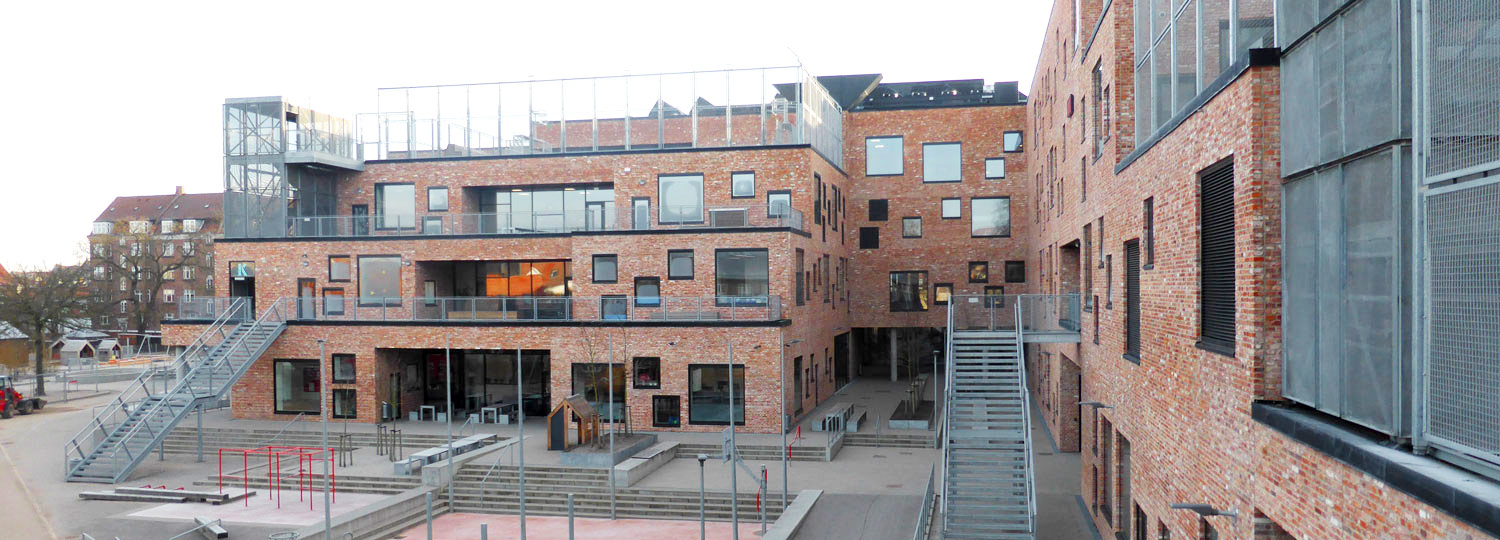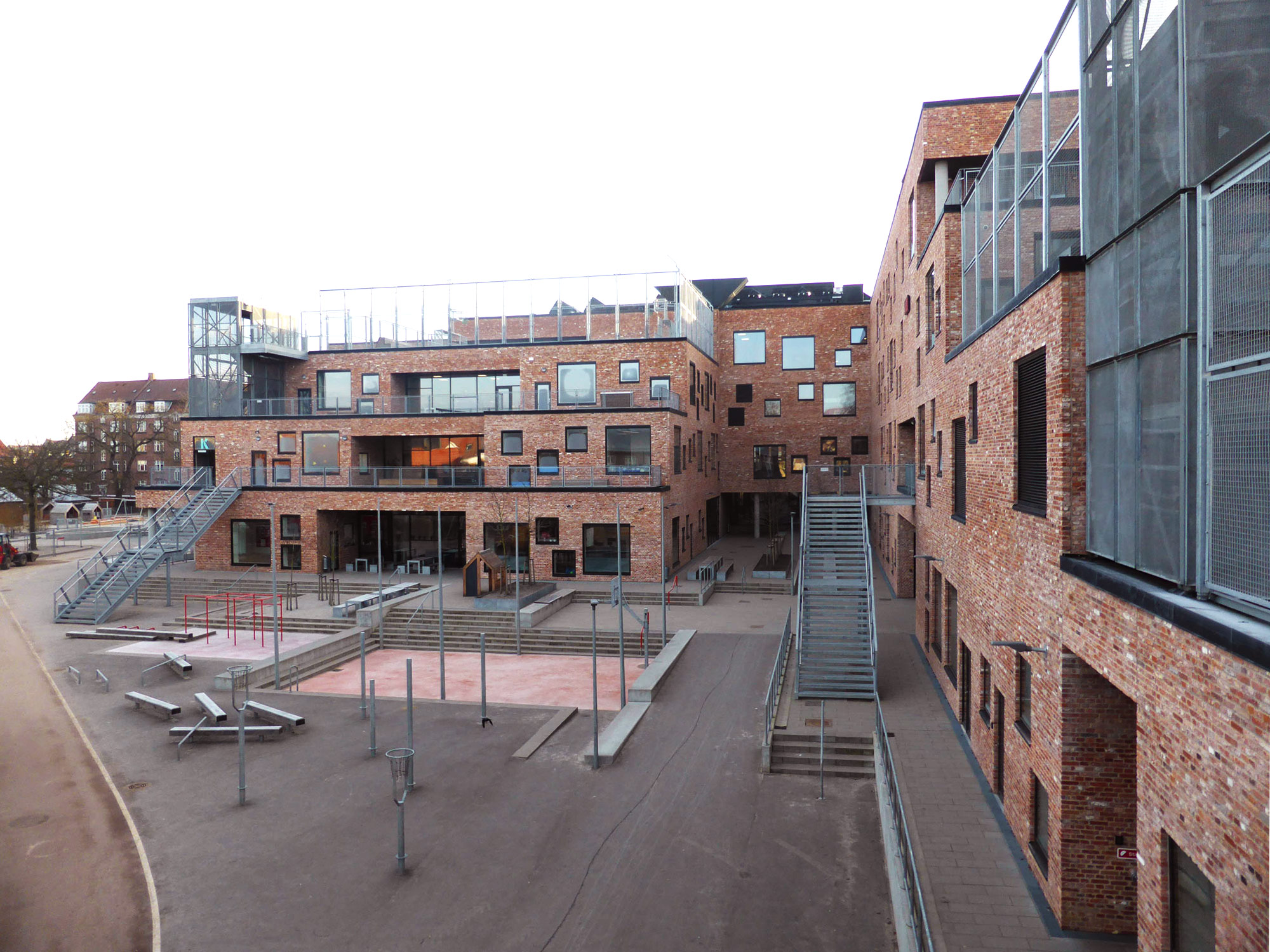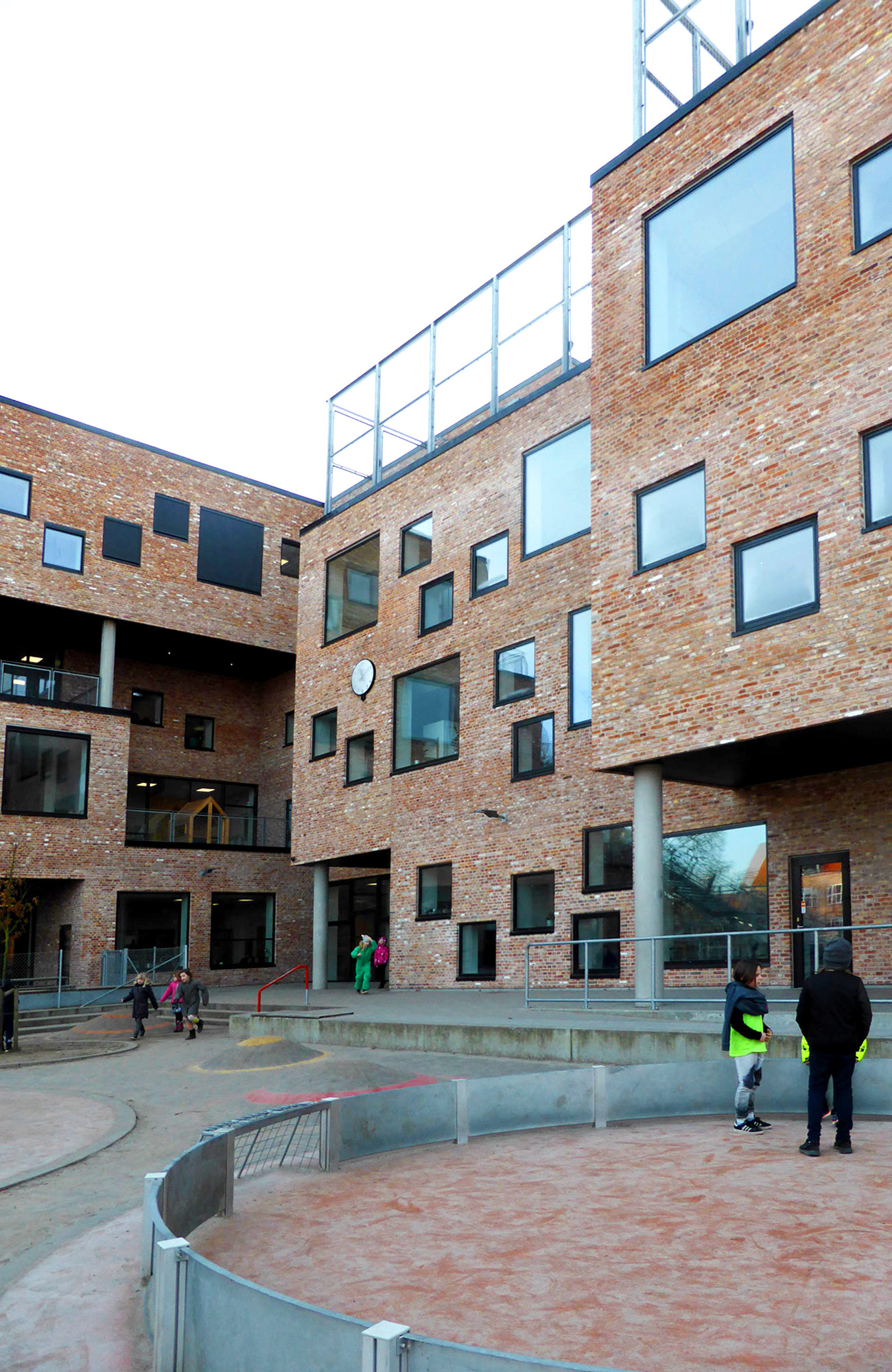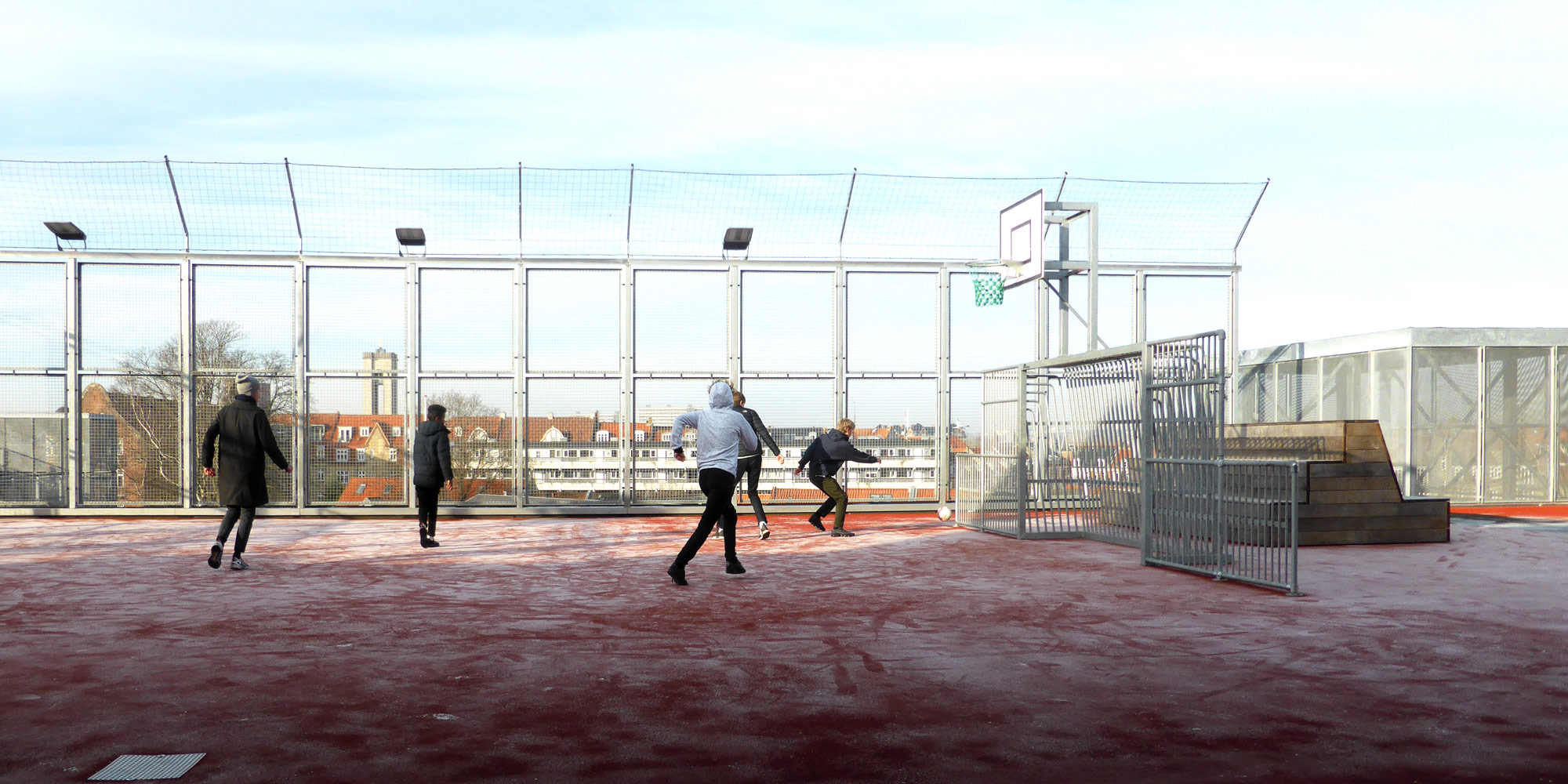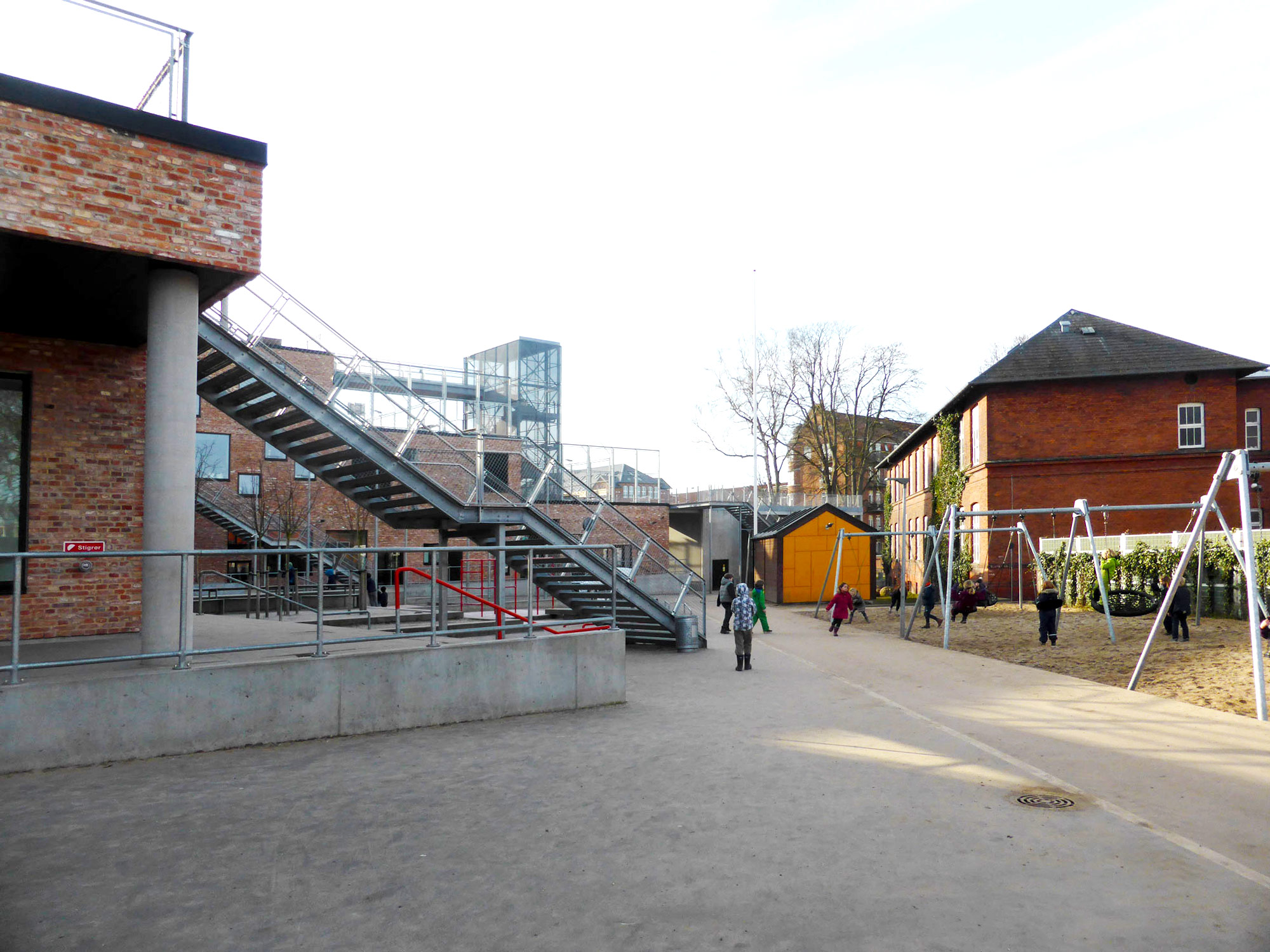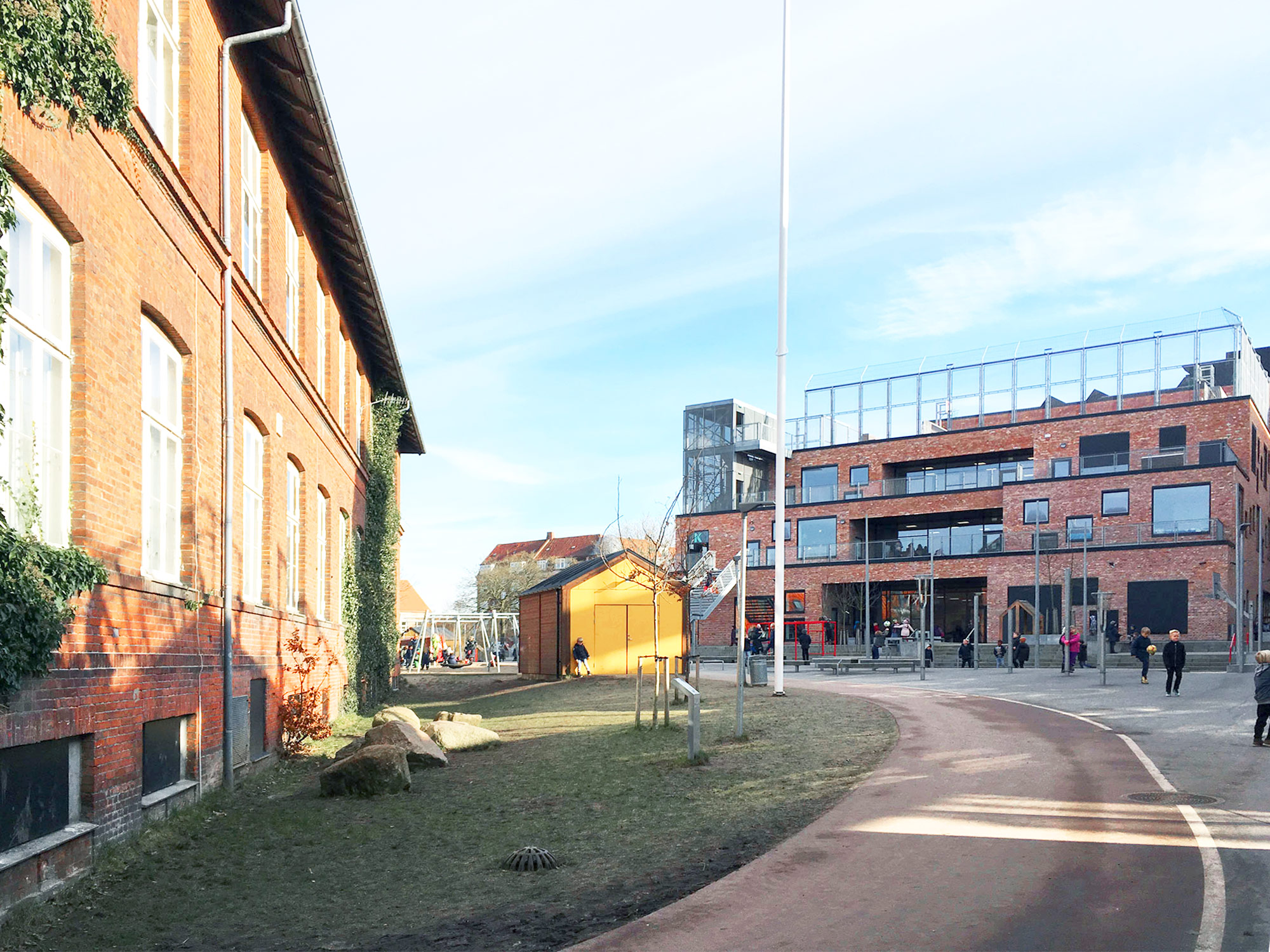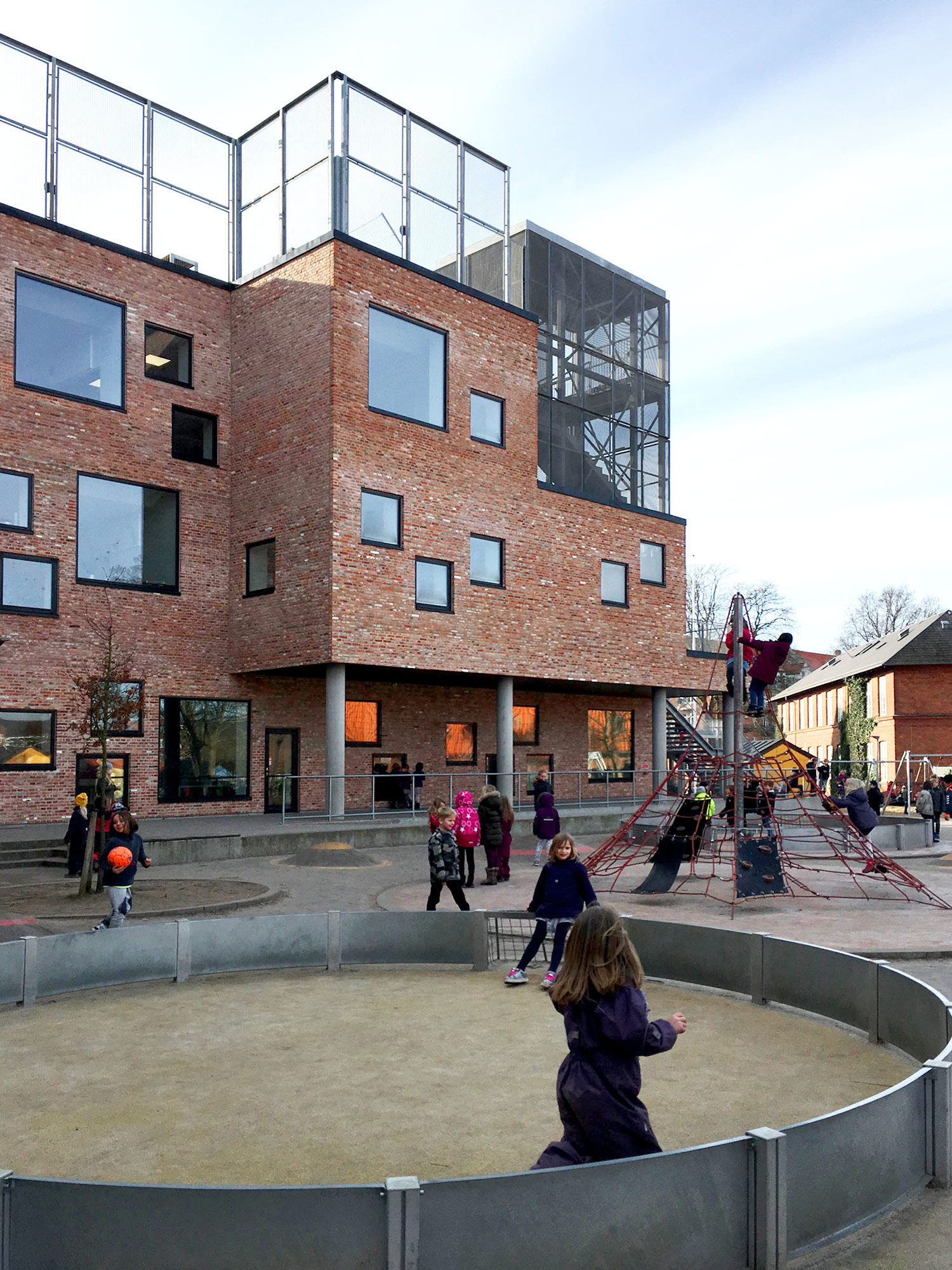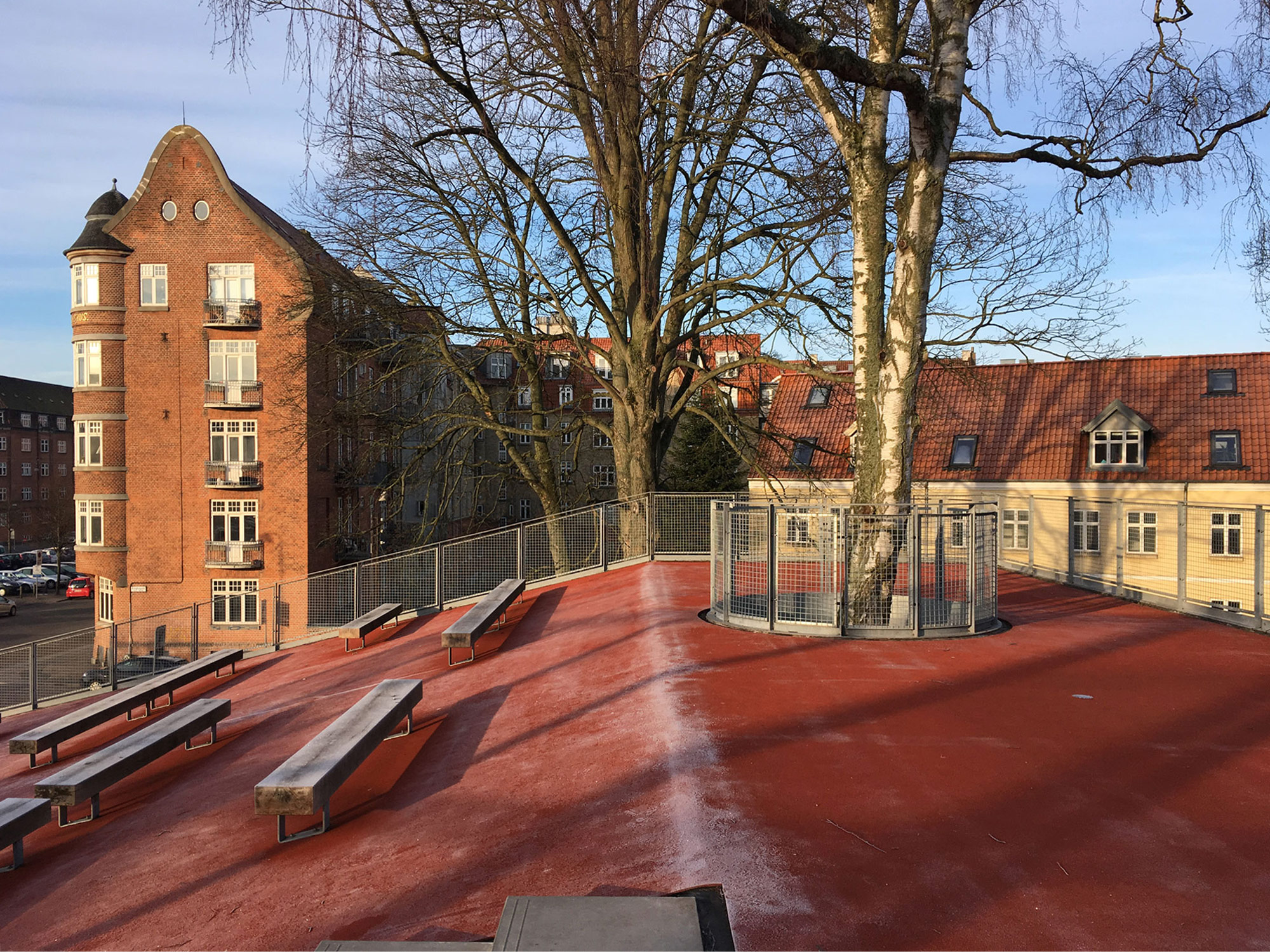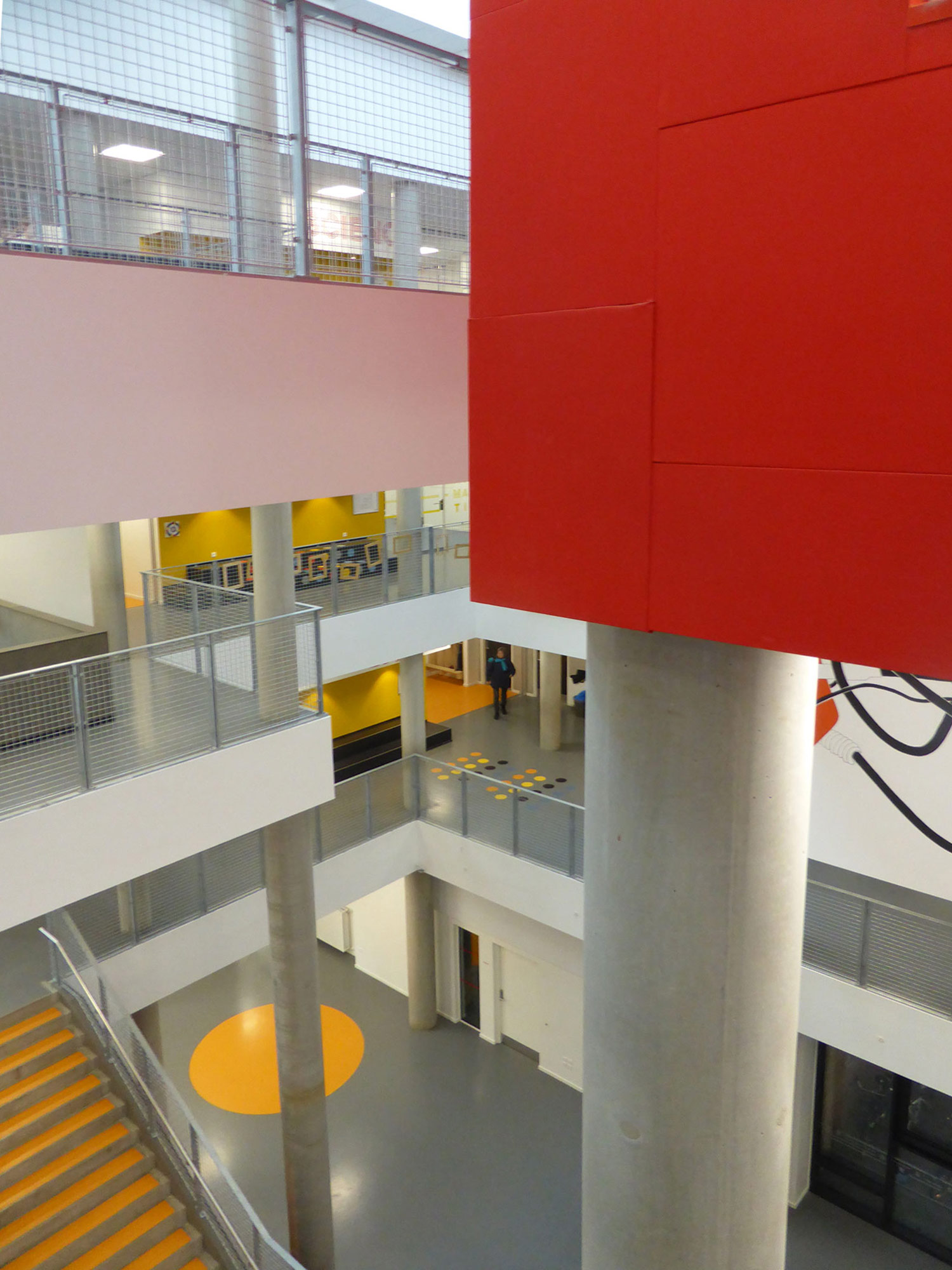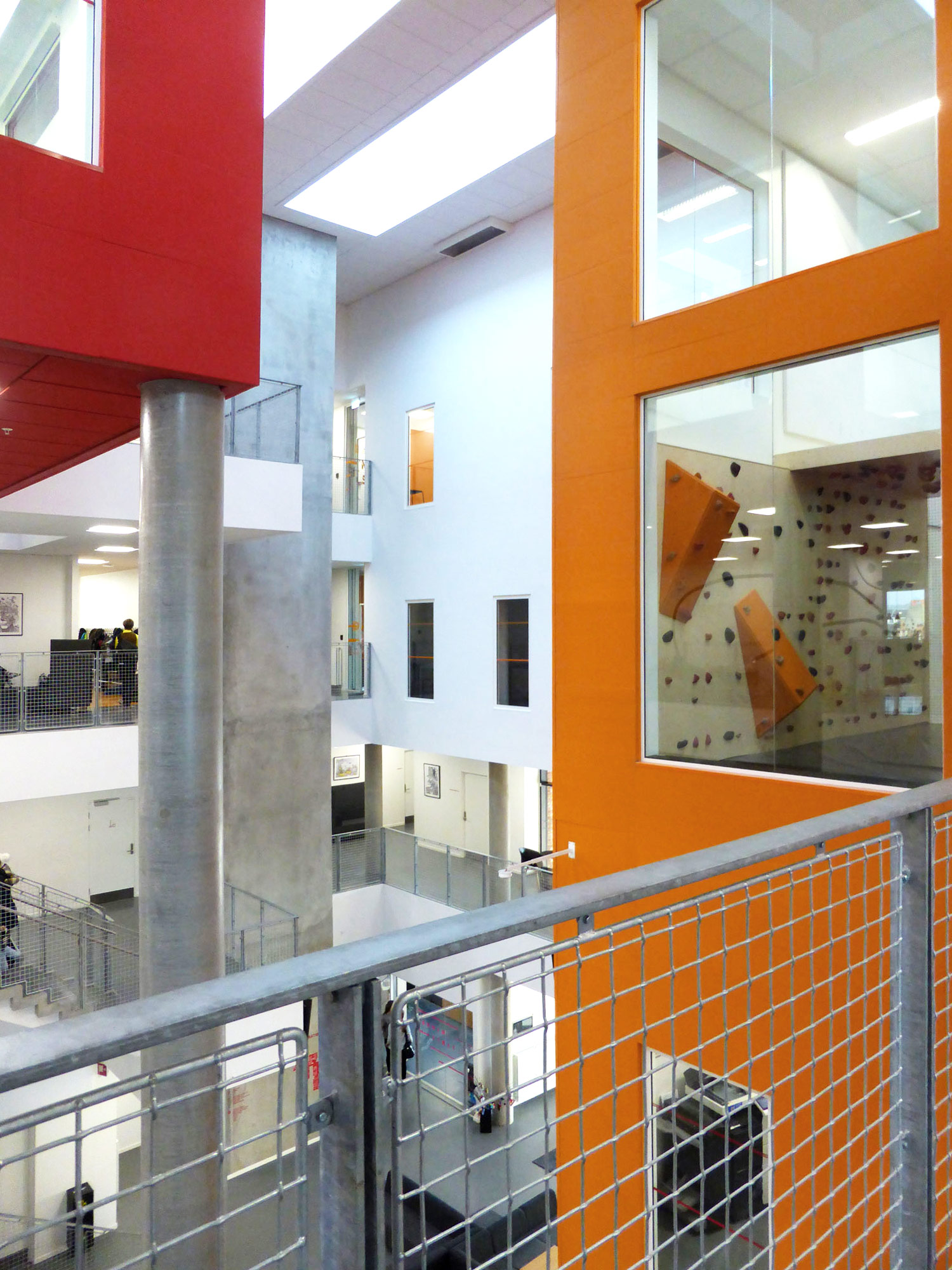Climbing, Jumping, Playing – Learning! Frederiksbjerg School in Aarhus

Foto: Heide Wessely
Since the educational reform of 2013, an hour's sport a day has been an essential part of the Danish school curriculum. At the state Frederiksbjerg School, however, that is not enough. Here, physical activity is an essential part of everyday school life, and that is reflected in the design of the structure. Sports areas are located on the terraced tops of the building volume, for example.
The gymnasium is situated directly next to the road, allowing passers-by to watch the sports and games inside. The entrance hall is dominated by a climbing wall with coloured handgrips on which primary-school children can clamber around. And thanks to the appropriate markings on the floor, what might be potentially tedious corridors become a racecourse.
Movement plays an important role in the pedagogic concept, too. If children become restless in class, teachers can send them out without further ado into the hall, where they can let off steam in a 10-minute power break and then return to lessons in a concentrated state. But even teaching differs strongly from the traditional frontal form most of us have experienced.
At the Frederiksbjerg School, pupils work in a project-oriented manner: individual subjects are fused together, and the classical classroom is no longer really necessary. In a small space within a cluster, each of which accommodates a separate school form, teachers issue working instructions. Pupils sit closely together on wooden steps simply listening. Afterwards, the assigned tasks are carried out alone or in teams in a group space – or even in window recesses, on the floor or in retreats and corners beneath the stairs.
The gymnasium is situated directly next to the road, allowing passers-by to watch the sports and games inside. The entrance hall is dominated by a climbing wall with coloured handgrips on which primary-school children can clamber around. And thanks to the appropriate markings on the floor, what might be potentially tedious corridors become a racecourse.
Movement plays an important role in the pedagogic concept, too. If children become restless in class, teachers can send them out without further ado into the hall, where they can let off steam in a 10-minute power break and then return to lessons in a concentrated state. But even teaching differs strongly from the traditional frontal form most of us have experienced.
At the Frederiksbjerg School, pupils work in a project-oriented manner: individual subjects are fused together, and the classical classroom is no longer really necessary. In a small space within a cluster, each of which accommodates a separate school form, teachers issue working instructions. Pupils sit closely together on wooden steps simply listening. Afterwards, the assigned tasks are carried out alone or in teams in a group space – or even in window recesses, on the floor or in retreats and corners beneath the stairs.
Further information:
Structural engineering: NIRAS
Landscape architects: Møller & Grønborg
Structural engineering: NIRAS
Landscape architects: Møller & Grønborg
